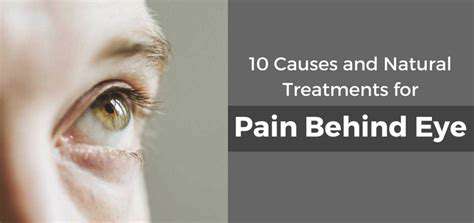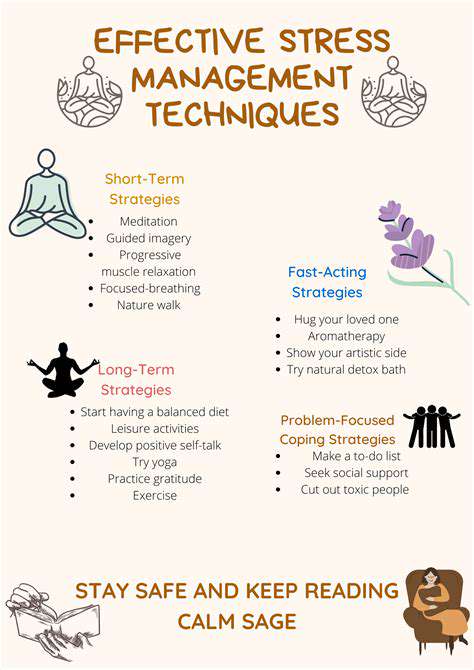Common Causes of Pain Behind the Eyes

Sinusitis and Its Impact on Eye Pain
One of the most prevalent reasons for pain behind the eyes is sinusitis, which is the inflammation of the sinus cavities. This condition often leads to pressure and discomfort in the forehead and around the eyes. When sinuses become congested, the pain can radiate into the eye area, causing significant discomfort. Symptoms may include a runny nose, facial swelling, and a feeling of fullness in the ears.
Sinusitis can be triggered by various factors such as allergies, bacterial infections, and even viral infections. Treatments may involve decongestants, nasal sprays, and in some cases, antibiotics. Addressing the underlying sinus issue can greatly alleviate the pain behind the eyes.
For those who experience chronic sinusitis, regular check-ups with a healthcare provider are advised. In addition, using humidifiers and staying hydrated can help reduce sinus congestion. Recognizing sinusitis early on can prevent more severe issues and provide relief from eye pain.
Eye Strain and Its Relation to Discomfort
Eye strain, also known as digital eye strain or computer vision syndrome, can lead to pain behind the eyes. With the increasing prevalence of screen usage, it’s become a common issue for many individuals. Prolonged screen time can cause discomfort, dryness, and blurred vision, contributing to the sensation of pain located behind the eyes.
Moreover, inadequate lighting or improper screen settings can exacerbate this discomfort. It's essential for individuals spending significant time on computers to take regular breaks following the 20-20-20 rule. Specifically, every 20 minutes, one should look away at something 20 feet away for at least 20 seconds.
Proper ergonomics at workstations can reduce eye strain significantly. Additionally, using blue light filters and ensuring adequate lighting can improve comfort during prolonged screen usage. Taking proactive steps can help mitigate the effects of eye strain and ultimately reduce pain behind the eyes.
Symptoms Associated with Pain Behind the Eyes
Common Symptoms of Eye Pain
Pain behind the eyes can present itself in various ways, leading to a range of discomfort levels. Patients often describe this pain as a dull ache or sharp stabbing sensation. The specific nature of the pain can provide important clues for diagnosing the underlying cause.
Additional symptoms might include sensitivity to light, which can exacerbate the discomfort. People experiencing this issue may find it challenging to be in brightly lit environments or to focus on screens, leading to further frustration.
Some individuals may also experience accompanying visual disturbances, such as blurred vision or difficulty focusing. These symptoms can interfere with daily activities, making it crucial to seek medical advice if they persist.
In some cases, pain behind the eyes might be accompanied by headaches or migraines, which can intensify the overall discomfort. Recognizing and documenting these symptoms can be helpful during consultations with healthcare professionals.
Potential Causes of Pain Behind the Eyes
The causes of pain behind the eyes can vary widely, ranging from minor issues to more significant health problems. Tension headaches are a common culprit, often triggered by stress or prolonged screen time, leading to discomfort behind the eyes.
Another potential cause is sinusitis, where inflammation of the sinuses leads to increased pressure and pain. This condition can be more pronounced during allergy seasons or when dealing with upper respiratory infections.
Eye strain, often caused by excessive screen time or inadequate lighting, can also result in significant discomfort. The muscles around the eyes may become fatigued, leading to pain that feels like it radiates behind the eyes.
In rare cases, more serious conditions like glaucoma or optic neuritis may be responsible for the pain. These conditions often require immediate medical attention, especially when accompanied by additional symptoms such as vision loss.
Diagnosis and Evaluation of Symptoms
When experiencing pain behind the eyes, a thorough evaluation by a healthcare professional is essential. The diagnostic process usually begins with a detailed medical history review and discussion of the specific symptoms experienced.
Healthcare providers may conduct a physical examination, including checking the eyes for any signs of strain or abnormalities. Vision tests may also be employed to evaluate how well the eyes are functioning.
In some instances, imaging tests such as CT scans or MRIs may be necessary to rule out more serious conditions, particularly when accompanied by severe pain or neurological symptoms. Early diagnosis can lead to more effective treatment options.
Patients are encouraged to be proactive in discussing their symptoms, including any triggering factors or patterns that can assist in pinpointing the underlying issue. Open communication ensures that healthcare providers can tailor their approach to each individual’s needs.
Relief Strategies for Pain Behind the Eyes
There are several strategies individuals can employ to alleviate pain behind the eyes, starting with lifestyle modifications. Regular breaks during screen time can help reduce eye strain, especially during prolonged activities like working at a computer.
Incorporating relaxation techniques such as deep breathing, yoga, or meditation can help manage stress, potentially reducing tension headaches that contribute to eye pain. These practices can promote overall well-being.
Using over-the-counter pain relief medications can provide temporary relief from discomfort. However, it’s essential to consult with a healthcare professional before starting any medication, especially if the symptoms persist.
Hydration plays a vital role in eye health, so ensuring adequate fluid intake is crucial. In addition, employing warm compresses and practicing eye exercises can help relax the eye muscles and improve blood circulation, offering further relief.
Effective Relief Strategies

Over-the-Counter Medications
When experiencing pain behind the eyes, many individuals first turn to over-the-counter medications for relief. These medications can help reduce inflammation and alleviate discomfort quickly. Options like ibuprofen or acetaminophen are often recommended for their effective pain-relief properties.
It's essential to follow the dosage instructions on the label carefully to avoid any potential side effects. For some, a combination of these medications may provide enhanced relief.
However, if the pain persists despite using over-the-counter options, it’s advisable to consult a healthcare professional for further evaluation.
Mindfulness and Relaxation Techniques
In addition to medications, practicing mindfulness and relaxation techniques can be beneficial in managing pain behind the eyes. These techniques help in reducing stress and tension, which are common contributors to eye discomfort. Activities like deep breathing exercises, meditation, and yoga can be valuable.
Spending time in a quiet, dimly lit environment can also help ease the strain on your eyes and promote relaxation. Incorporating these practices into your daily routine can enhance overall well-being.
Additionally, ensuring regular breaks from screens can prevent eye strain, thereby reducing the likelihood of experiencing pain behind the eyes.